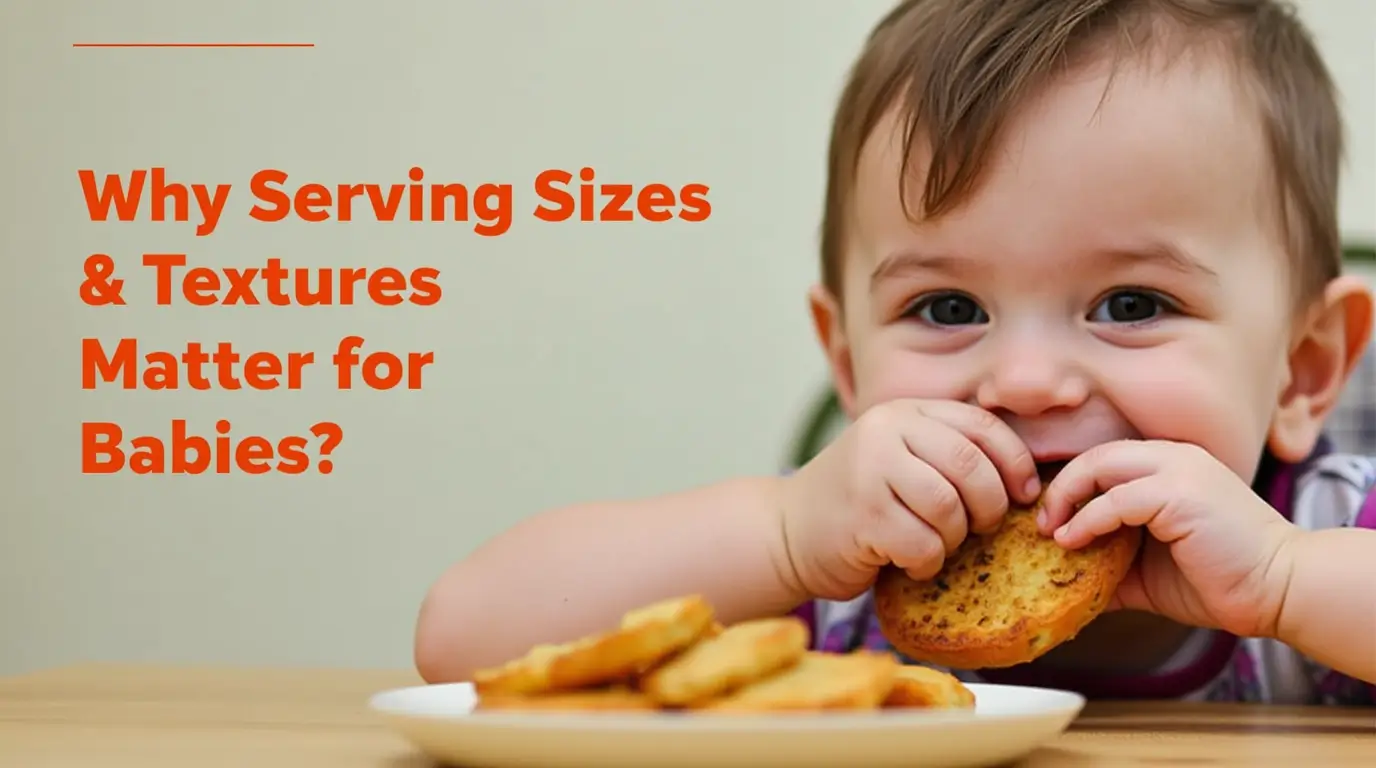Introduction
Feeding a baby can feel like solving a puzzle, where the pieces constantly change as they grow! If you’ve ever wondered why serving sizes & textures matter for babies, you’re not alone. Many parents worry about whether their little one is eating too much or too little, and let’s not even get started on the struggle of transitioning to solid foods!
Thank you for reading this post, don't forget to subscribe!Understanding the right portion sizes and textures for each stage of your baby’s development isn’t just about preventing messes (although that’s a bonus). It is crucial in digestion, nutritional intake, and motor skill development. In this article, we’ll break down everything you need to know about why serving sizes & textures matter for babies and how to get it right!
1. Prevents Overfeeding or Underfeeding
Babies may not have an instruction manual, but their cues tell us a lot. Giving the right portion sizes ensures they get just the right amount of nutrients without overloading their tiny tummies.
- Overfeeding: This can lead to digestive discomfort, excessive weight gain, and an increased risk of childhood obesity.
- Underfeeding can result in nutritional deficiencies, slower growth, and lower energy levels.
Each baby is unique, but here’s a general serving size guideline:
- 0–6 months: Exclusively breastmilk/formula on demand
- 6–9 months: 1–2 tablespoons of solid food per meal, starting once a day
- 9–12 months: 2–4 tablespoons of food per meal, 2–3 times a day
2. Helps Develop Healthy Eating Habits
Starting with appropriate serving sizes helps babies understand hunger and fullness cues, preventing overeating later in life. Encouraging responsive feeding, where you follow your baby’s hunger signals, is key!
3. Supports Digestion and Comfort
Their digestive systems are still developing, so feeding them the right amount reduces gas, bloating, and discomfort. It’s all about making mealtime a pleasant experience rather than a painful one!

1. Encourages Oral Motor Development
Texture progression helps babies learn how to chew and swallow safely. Moving from smooth purees to chunkier textures strengthens the muscles of the jaw, tongue, and mouth.
Here’s a typical texture progression guide:
- 4–6 months: Runny purees
- 6–9 months: Thicker purees and mashed foods
- 9–12 months: Soft finger foods like cooked veggies or ripe fruits
- 12+ months: More solid textures like pasta, scrambled eggs, and toast
2. Reduces the Risk of Picky Eating
The earlier a baby is exposed to various textures, the less likely it is to become picky. When it reaches toddlerhood, it will be more open to trying different foods without hesitation.
3. Enhances Sensory Exploration
Touching, squishing, and playing with food helps babies become comfortable with different textures and improves their overall sensory development. Sure, it’s messy, but it’s all part of the learning process!
Sticking to Purees Too Long
Solution: Gradually introduce mashed and soft solids by 7–8 months.
Ignoring Hunger & Fullness Cues
Solution: Let your baby decide when they’ve had enough instead of finishing a set amount.
Offering Large Portions Too Soon
Solution: Start small and increase portions based on the baby’s appetite.
Rushing Through Texture Progression
Solution: Allow enough time for your baby to get comfortable with each new texture before moving on.

When to Start Introducing Solids?
Most babies are ready for solid foods around 4–6 months. This is when their digestive systems mature, and they start being curious about what they eat.
Signs Your Baby is Ready
Look for these cues:
- Sitting up with minimal support.
- Showing interest in your meals.
- No longer pushing food out with their tongue (tongue-thrust reflex)
Tools You’ll Need for Baby Food Preparation
Equip yourself with the basics:
- A good blender or food processor.
- Steamer basket for softening veggies.
- Silicone freezer trays for portioning and storing purees.
FAQs
1. Why are serving sizes important for babies?
2. How do serving sizes affect my baby’s appetite?
3. What role do textures play in a baby’s eating habits?
4. At what age should I start offering different textures to my baby?
5. How can I safely prepare textured foods for my baby?
Conclusion
So, why do serving sizes and textures matter for babies? They set the foundation for healthy growth, digestion, and eating habits! Getting portion sizes right prevents overfeeding or underfeeding, while introducing the right textures at the right time supports oral motor skills and sensory development.
Feeding your baby doesn’t have to be a stressful guessing game. Follow their cues, introduce textures gradually, and trust that with a little patience (and maybe some extra napkins!), you’re helping your little one build a lifetime of healthy eating habits.
Got more questions? Drop them in the comments, and let’s chat about all things baby food!

